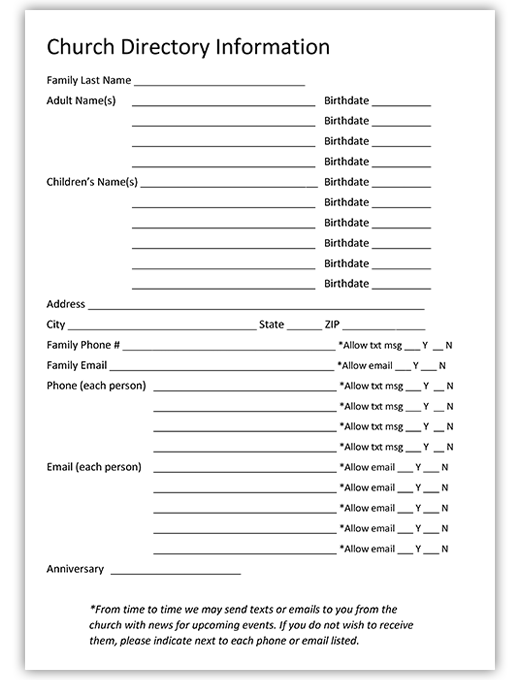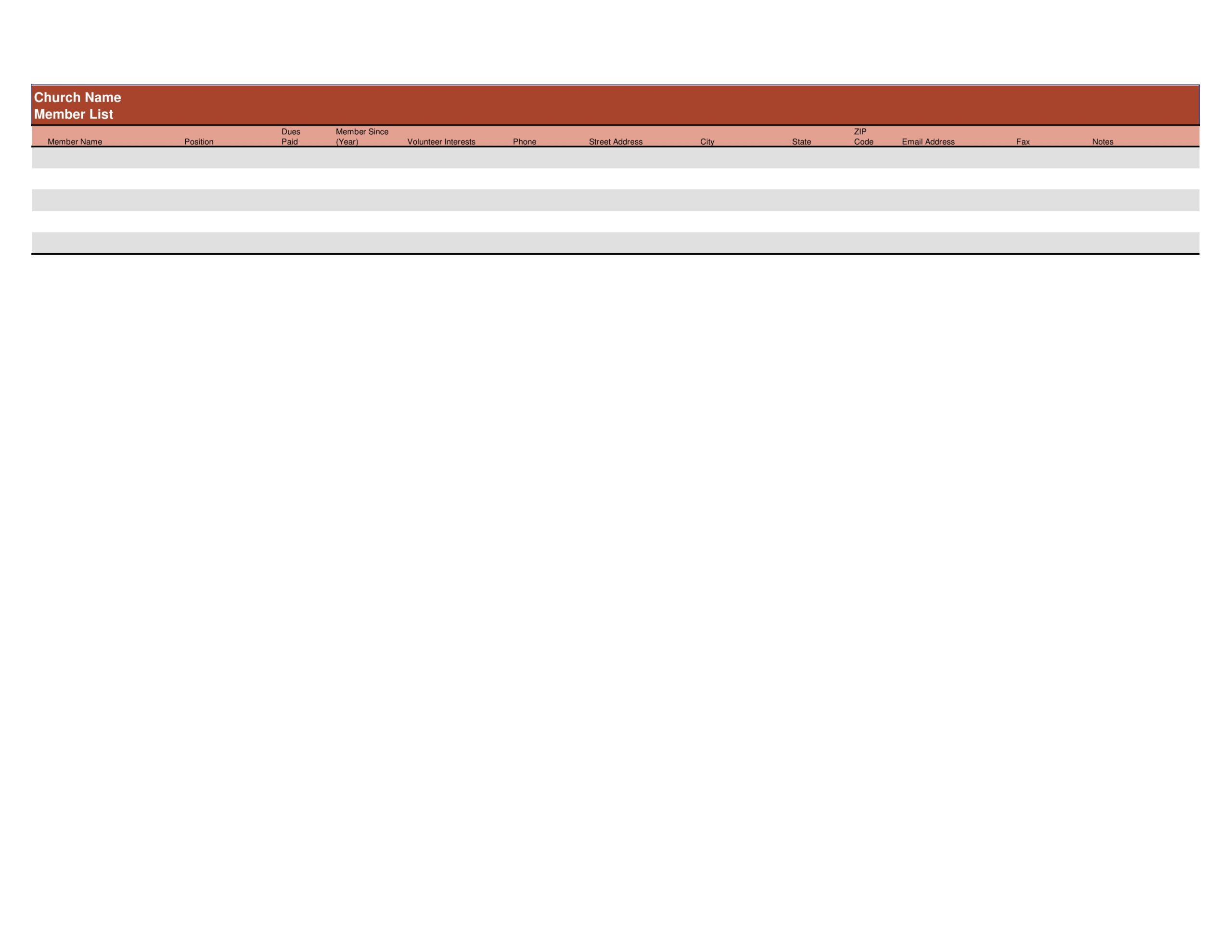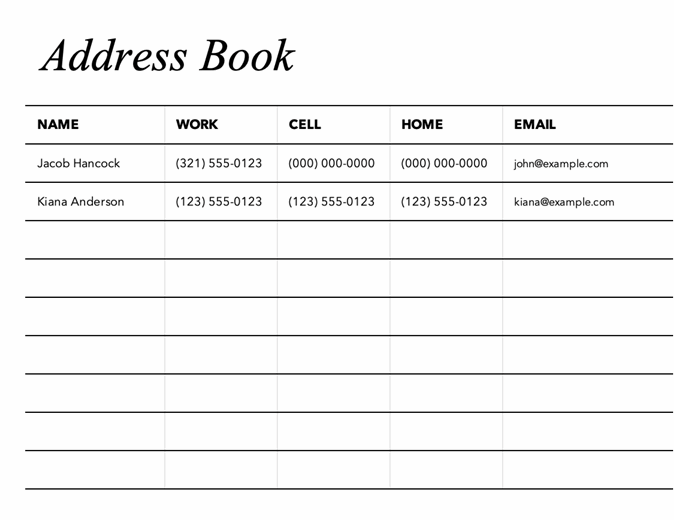

- #Photo church directory template for pc and mac install
- #Photo church directory template for pc and mac mac
If you have installed plugins that are more like external editors, such as the ones from Topaz Labs or ON1 that you access via the Photo > Edit In menu, then you will want to go to the developer’s web site and download the installers for those plugins to the new computer and install them like new software at the end of the transfer process. Lightroom plugins (.lrplugin file extension) are typically cross-platform, but some may have special requirements for each operating system, so be sure to check the web site of the plugin author for all compatibility concerns. There’s no wrong answer, but I’ll leave it to you to know where your plugins are stored if not in the Modules folder. However, you may have chosen to store your plugins in a different location, and manually add them via the Plug-in Manager. lrplugin file within the Modules folder so that the Plugin Manager will automatically add and enable the plugin. In regards to third-party plugins, I’ve always found it simplest to place a copy of the. Tip: While you have LrC open take note of all of your preference settings so that you can re-configure them on the new computer.
#Photo church directory template for pc and mac mac
In addition, if you are migrating from Windows to Mac the preferences are stored in a different location on Mac anyway. I don’t recommend bringing a copy of this file to the new computer, as I think it’s wiser to start with a fresh preference file on the new computer. That said, on Windows, the LrC preference file is also stored within the Lightroom folder in a folder named Preferences. Your task is to place a copy of all your custom files on the external drive destined for the new computer, and the easiest way to do that is to copy the entire Lightroom folder to the external drive. Within this Lightroom folder are all your templates, third-party web galleries (if installed), and the most common location for third-party plugins (the Modules folder), within their respective subfolders. If you don’t have Store presets with this catalog checked then don’t check it now, as it will simply create a new folder (named Lightroom Settings) alongside your catalog with only the default presets, which won’t help us with your custom presets.

On the Preferences > Presets tab, if you already had Store presets with this catalog checked then I will assume you know where all your templates are, and you can skip ahead to the catalog section. Choose Library, and then follow the rest of the path above. Open a new Finder window, click Go in the Menu bar and hold the Option key to make Library magically appear in the list of places to go.

Mac does a similar thing with the Library folder. In Windows Explorer, go to Tools > Folder Options > View, and check Show Hidden Files and Folders. Note: Windows can hide the AppData and other important folders. Win: Users//AppData/Roaming/Adobe/Lightroom Mac: Users//Library/Application Support/Adobe/Lightroom This will open the folder, named Lightroom, containing all of your templates into Finder (PC: Windows Explorer), which is located here: The simplest way to access this location is to go to Lightroom Classic > Preferences > Presets (PC: Edit > Preferences > Presets), and click the Show All Other Lightroom Presets button. In my experience, most people leave their templates in the default central location. We’ll start with grabbing the templates and then come back to Develop presets separately. The reason for this is that awhile back Adobe moved Develop presets to be stored away from the rest of the templates (this was so that Develop presets could be shared with Adobe Camera Raw). In this way, templates would include filename templates, metadata templates, print templates, import templates, and so on. However, since we are trying to be specific at the moment I will refer to the presets you use in the Develop module as presets, and everything else we’ll call templates. The words presets and templates often get used interchangeably within LrC, and broadly speaking there’s nothing wrong with that. When you install LrC on your new computer you will get all the default presets and templates, so we are just concerned with all the custom bits you added. Time to gather up all your custom presets, plugins, and templates! If you’ve never created custom presets or templates, and you’ve never installed a third-party plugin or web gallery, then you can skip this part of the process and we’ll see you in the section on the catalog.

Let’s wrap this up with bringing your presets, templates, plugins, and most importantly, your catalog to the new computer and making them work. Ok, last week we went over what to do first, getting the new computer prepped, and migrating your photos.


 0 kommentar(er)
0 kommentar(er)
